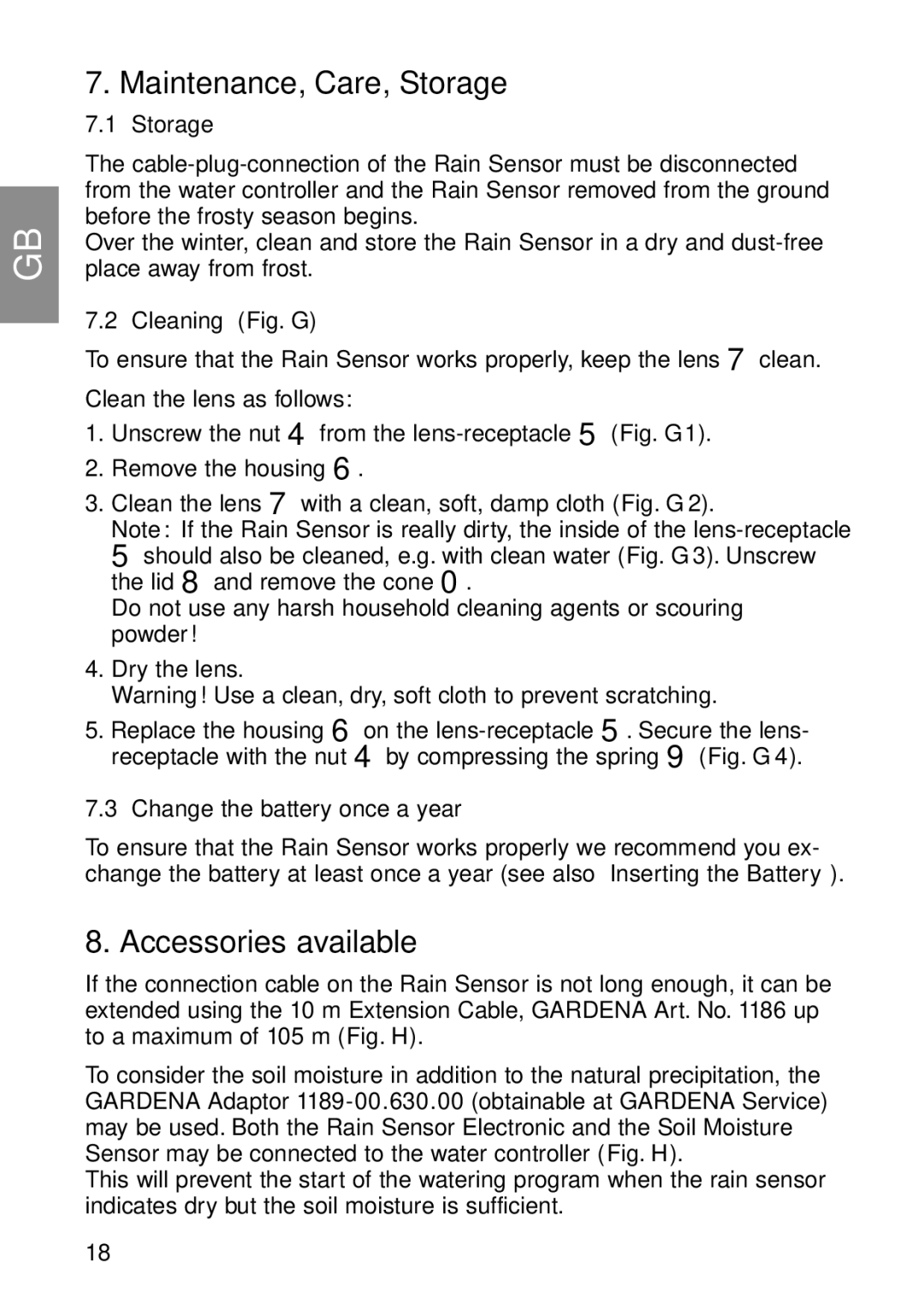1189 specifications
Gardena 1189 is an innovative gardening tool that serves as a reliable and versatile addition to any gardener's toolkit. With its focus on functionality and user-friendliness, this tool has garnered attention for making gardening tasks more efficient and enjoyable.One of the main features of the Gardena 1189 is its ergonomic design. The handle is crafted to provide a comfortable grip, allowing users to work for extended periods without experiencing discomfort. This thoughtful design detail enhances the overall user experience, particularly for those who may have limited strength or mobility in their hands.
In terms of technology, the Gardena 1189 incorporates a robust cutting mechanism that ensures clean and precise cuts. This feature is essential for maintaining the health and appearance of plants, as clean cuts help reduce the risk of disease and promote faster healing. The sharp, durable blades are made from high-quality stainless steel, ensuring longevity and resistance to rust, making it a reliable choice for both amateur and experienced gardeners.
Another notable characteristic of the Gardena 1189 is its lightweight construction. Weighing significantly less than many competing tools, it reduces user fatigue, making it ideal for tasks such as pruning, shaping shrubs, or tackling overgrown areas. This portability is a key advantage, especially for gardeners who need to move around their garden frequently.
Additionally, Gardena has integrated a safety feature into the design of the 1189. The blade lock mechanism ensures that the cutting blades remain securely closed when not in use, preventing accidental injuries. This is particularly important for families with children or pets who may be present during gardening activities.
The Gardena 1189 is also designed for ease of maintenance. The blades can be easily cleaned and require minimal sharpening, making it a practical choice for users who prefer tools that don’t demand excessive upkeep.
Overall, the Gardena 1189 stands out in the gardening tool market due to its combination of ergonomic design, advanced cutting technology, lightweight structure, and enhanced safety features. It truly represents a thoughtful blend of reliability and convenience, making it an excellent choice for anyone looking to elevate their gardening experience. Whether you are a seasoned gardener or a beginner, the Gardena 1189 offers a perfect balance of innovation and functionality.
